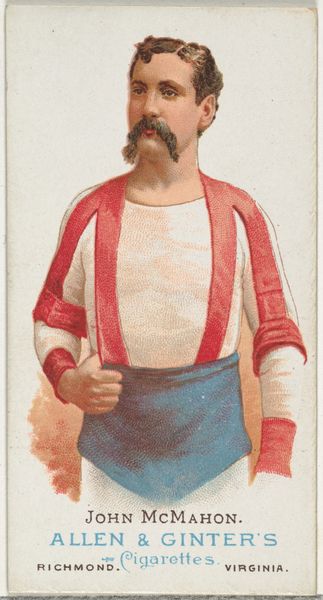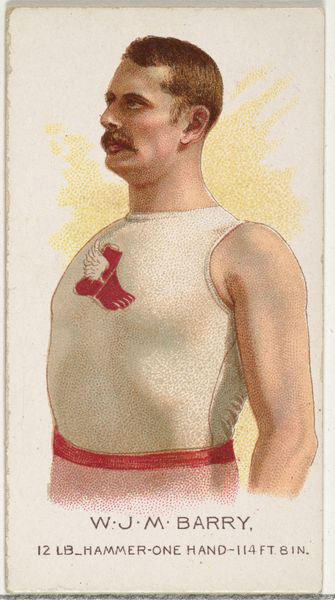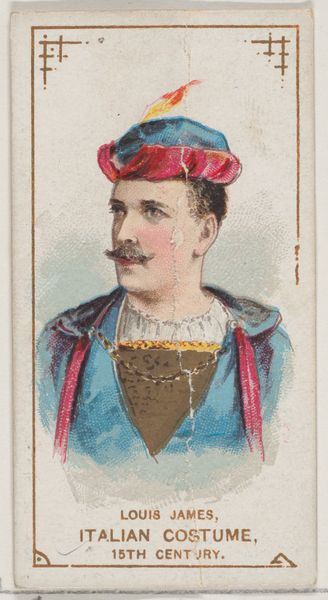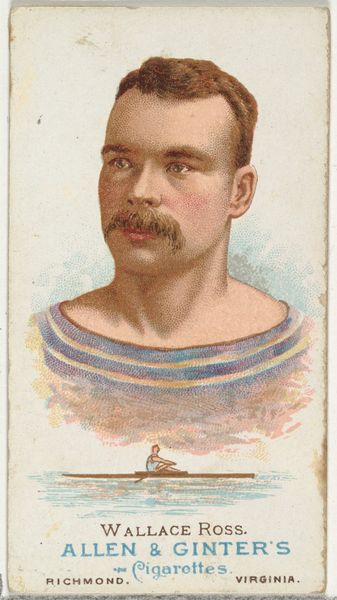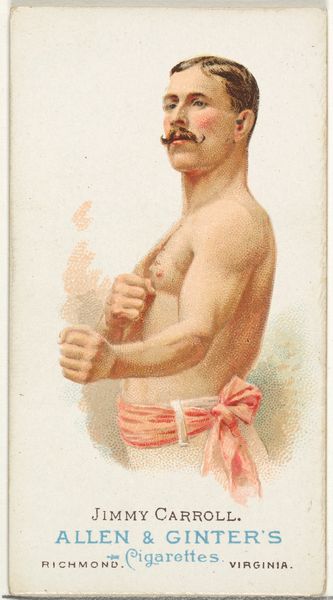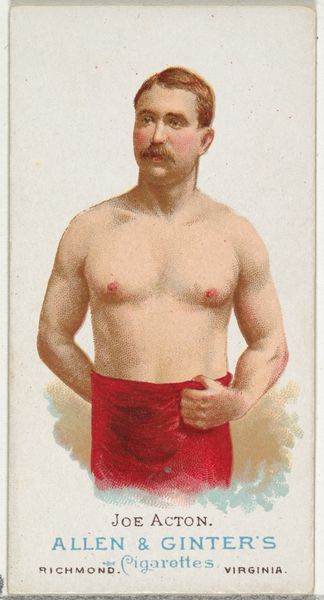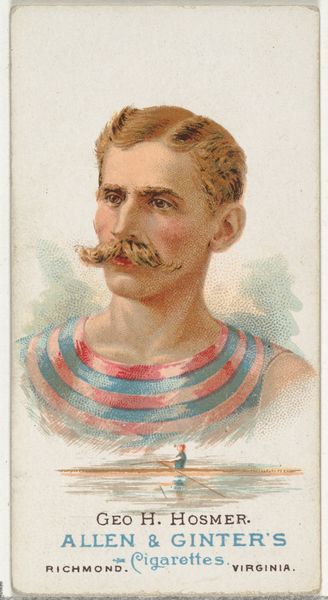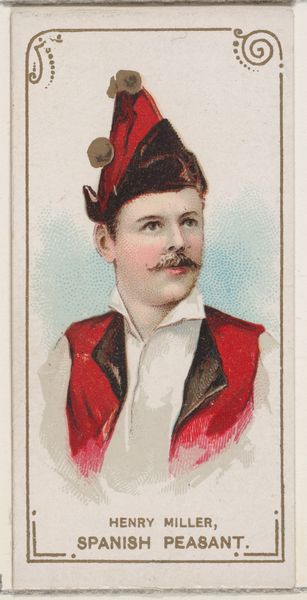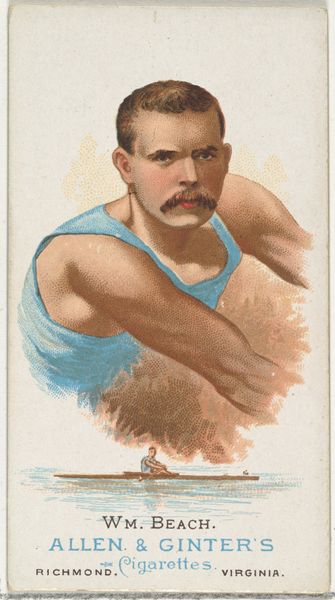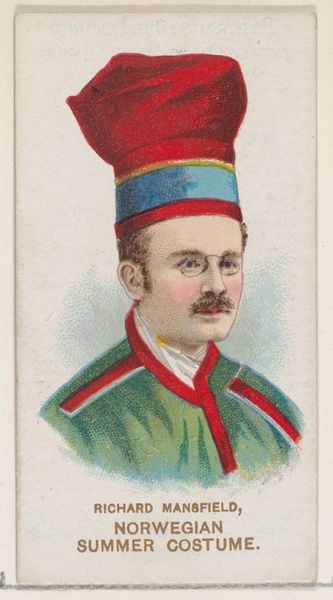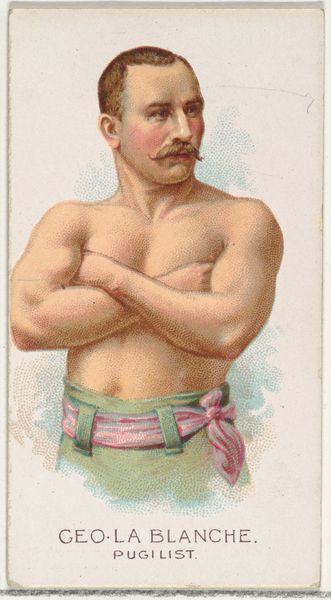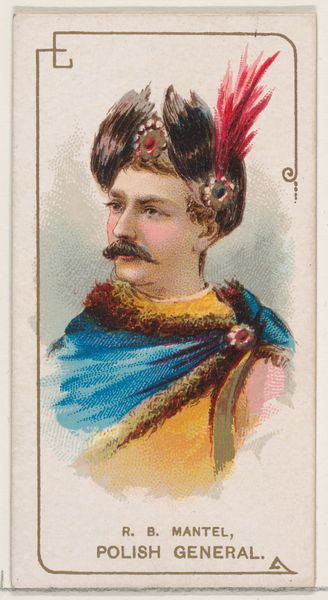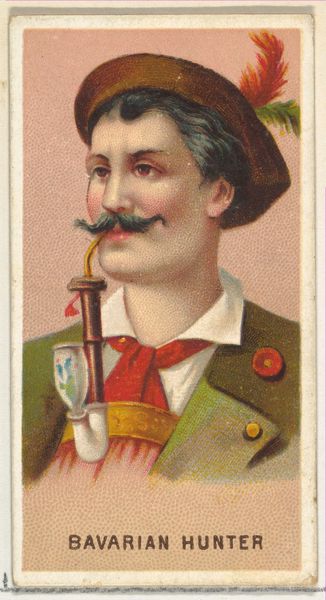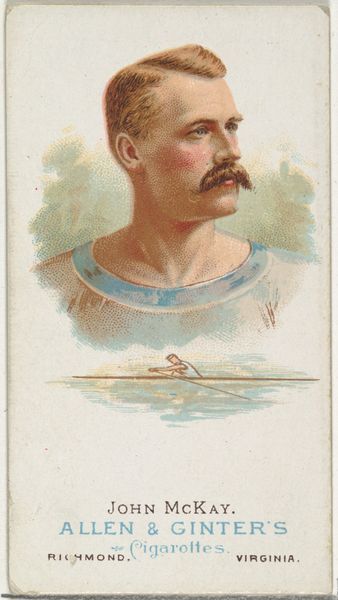
J.H. McLaughlin, Wrestler, from World's Champions, Series 1 (N28) for Allen & Ginter Cigarettes 1887
0:00
0:00
drawing, coloured-pencil, print
#
portrait
#
drawing
#
coloured-pencil
# print
#
impressionism
#
coloured pencil
#
men
#
watercolour illustration
#
athlete
Dimensions: Sheet: 2 3/4 x 1 1/2 in. (7 x 3.8 cm)
Copyright: Public Domain
Curator: Immediately, I notice the almost unsettling smoothness of the skin rendered in what appears to be coloured pencil and print. The lack of texture gives it an eerie quality, doesn't it? Editor: Indeed. What we’re observing is "J.H. McLaughlin, Wrestler," a lithograph from 1887 produced by Allen & Ginter as part of their World's Champions series. These were, of course, included in cigarette packs. Curator: Ah, the scale makes perfect sense now! As a trade card, the dimensions would necessitate a kind of hyper-realism to capture detail at that size. I find the color palette, though limited, striking. The blues and reds pop against the muted skin tones. Editor: Consider the cultural context. The late 19th century witnessed a surge in commercial advertising and the popularization of sports. These cards functioned as promotional material but also as collectibles, reflecting societal values and ideals of athleticism. Curator: The composition directs the eye upwards. The wrestler’s gaze is intentionally focused off to the side. Semiotically, he’s not engaging us, the viewer, but rather suggesting a point of action beyond the frame. I sense confidence here, or rather the artist’s projection of confidence, through composition and form. Editor: Right, and beyond pure visual pleasure, consider how these cards helped to construct celebrity and promoted a vision of masculinity centered around physical prowess. They were tools that actively shaped the cultural landscape and gender norms of the time. Note the detail afforded to his mustache. Curator: Good point; even within the limited color range, the artist takes advantage of the contrast with his skin. You cannot avoid the power and the intentionality here. Editor: Absolutely. Thinking about art through such historical lenses brings the piece, otherwise a simple portrait, into dialogue with profound shifts in late 19th-century culture. Curator: Studying this piece offers insight into not only wrestling as sport, but as theatre and commercialization that influenced taste and, in turn, helped grow an industry. Editor: Analyzing this image has certainly shown me how the mundane can open the door to complex discussions.
Comments
No comments
Be the first to comment and join the conversation on the ultimate creative platform.
